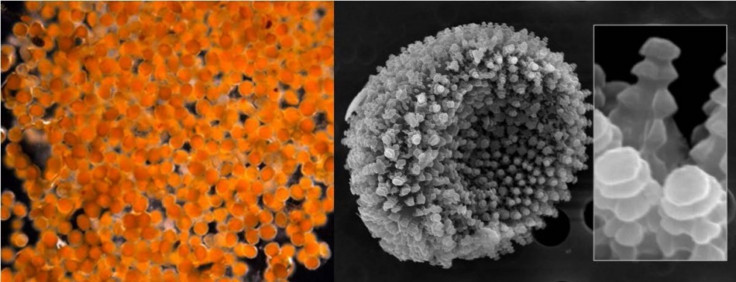Alaskan Orange Goo Now Identified as Fungal Spores, Yet Mystery Remains

Scientists at National Oceanic and Atmospheric Administration (NOAA) have now identified that the mysterious orange-colored goo that washed up on the shore of a remote Alaska village this month was fungal spores, not millions of microscopic eggs as said earlier.
They determined that the substance was consistent with spores from fungi that cause rust, a disease that infects only plants causing a rust-like appearance on leaves and stems.
Rust fungi reproduce to infect other plants by releasing spores which disperse often times great distances by wind and water.
However, the mystery still remains as it needs to be found out that whether this spore belongs to one of the 7,800 known species of rust fungi has not yet been determined.
At this point, the best identification we can give to as the origin of these spores is a rust fungus, said Steve Morton with the NOAA Charleston lab.
To solve the mystery, scientists need the host of the spores and the fruiting body, akin to the mushroom stage.
The spores are unlike others we and our network of specialists have examined; however, many rust fungi of the Arctic tundra have yet to be identified, Morton said.
Earlier this month, residents of the remote Eskimo village of Kivalina, along Alaska's northwest coast, woke up to an orange sheen across the surface of a nearby lagoon just a few feet from their houses. To their surprise, the substance also showed up in some of the residents' rain buckets.
Residents initially feared the material might be pollution from the nearby Red Dog Mine, the world's largest zinc producer. But, tests showed that the substance was biological in nature, rather than oil or pollution as originally thought by concerned residents of Kivalina.
Last week, NOAA identified the mysterious substance as millions of microscopic eggs filled with fatty droplets. The agency's scientists have said the fat-filled eggs could be embryos produced by some kind of crustacean.
The goo, found at the edge of Kivalina, an Inupiat Eskimo community at the tip of a barrier reef on Alaska's northwest coast, quickly disappeared.
The goo was also found in the Wulik River, which flows into the lagoon and is a source of drinking water for the villagers. Villagers have suspended storing water from the river till the scientists determine what exactly the material is.
The sticky orange material, which dried into a powder, has washed away from Kivalina, said Julie Speegle, a spokeswoman for NOAA's National Fisheries Service in Alaska, Reuters reported.
Speegle said the material was likely harmless. Rust is a disease that only affects plants, so there's no cause for alarm.
© Copyright IBTimes 2024. All rights reserved.







